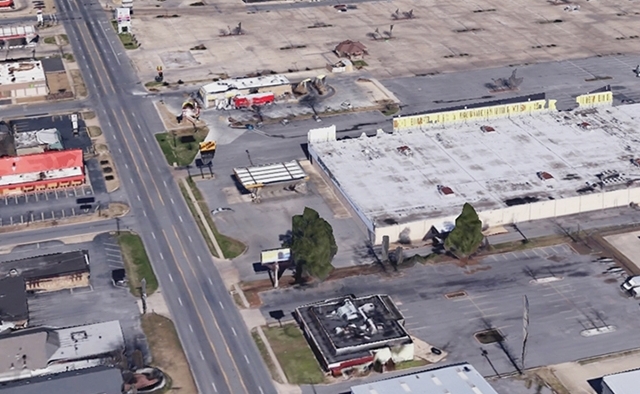Pine Bluff lands $548,492 Department of Transportation grant
by April 23, 2024 6:45 pm 447 views

A project team co-led by the University of Arkansas Community Design Center and Go Forward Pine Bluff has been awarded a $548,492 grant from the U.S. Department of Transportation’s 2024 Reconnecting Communities and Neighborhood Grant Program.
The Pine Bluff project is one of 132 planning or capital projects to be funded through $3.33 billion in grant awards in the 2024 program, and the only one from Arkansas.
Project partners for “Neighborhood Revitalization through Retrofit of Highway 63B in America’s Fastest Shrinking City: Pine Bluff, Arkansas” also include the City of Pine Bluff, the Southeast Arkansas Regional Planning Commission, Arkansas Department of Transportation, the Pine Bluff Urban Renewal Agency, and NOB A+D (Architecture + Design), the only female minority-owned architecture firm in Arkansas. The UA Community Design Center is an outreach center of the Fay Jones School of Architecture and Design.
The planning study supports revitalization of the 280-block historic South-Central downtown neighborhood through the context-sensitive retrofit of Arkansas State Highway 63B, a five-lane arterial road.
The oversized corridor and the scale of its auto-centric land uses — now mostly large abandoned dead zones — accelerated economic decline in this African American neighborhood, due to corridor desertification rather than congestion.
Scenario planning will explore options in right-sizing a 1.2-mile segment of this low-trafficked corridor as an active transportation network spine with urban infill land-use improvements between the downtown business district and the city’s largest employment center to the south, the Jefferson Regional Medical Center.
“Our dedicated team has worked hard to establish strategic plans and bring funding to the city of Pine Bluff,” said Ryan Watley, CEO of Go Forward Pine Bluff. “This grant works in tandem with our ALICE homeownership initiative to repair neighborhoods through human and financial investments. Success begets success, and the half-million-dollar award adds to the more than $20 million in private and philanthropic funds raised to complement a 2017 sales tax increase. For Go Forward Pine Bluff, it keeps the fire burning to continue making a difference in Pine Bluff. We look forward to working with NOB A+D, the U of A Community Design Center and the Pine Bluff Urban Renewal Agency.”
The planning initiative will consist of four areas: Community-based Engagement Program: Stakeholder Sessions and Design Workshops; Highway Frontage Quality Assessment; Context-Sensitive Street Plan for State Highway 63B; and Housing Plan and Urban Design Retrofit of Target Highway Properties.
“The Reconnecting Communities Grant is a great opportunity to use urban design — driven by an ethos of repair — in creating high-quality living environments for populations that have suffered the downstream impacts of auto-dominated planning,” said Steve Luoni, director of the UA Community Design Center. “Our partnership with GFPB, the city and neighborhood residents will focus on a context-sensitive street approach that combines pattern language in art, architecture, landscape architecture, and urban design. The arterial will be rethought as a place-based destination — like in ‘the tradition of great streets’ — without compromising traffic services.
“Pattern languages include ‘Living Streets’ (pedestrian-oriented streets that deliver non-traffic services including art and socializing), ecologically based stormwater management (green infrastructure), streets modulated as rooms (such as plazas and squares), and development of property frontage standards that support good corridor form,” Luoni added. “Eighty percent of all next-generation design commissions for buildings, landscapes and infrastructure will involve rehabilitation. More than ‘smart cities’ and its fetishization of data, this ethos of repair will drive the economic, ecological and social innovation necessary in building prosperous and equitable places.”
